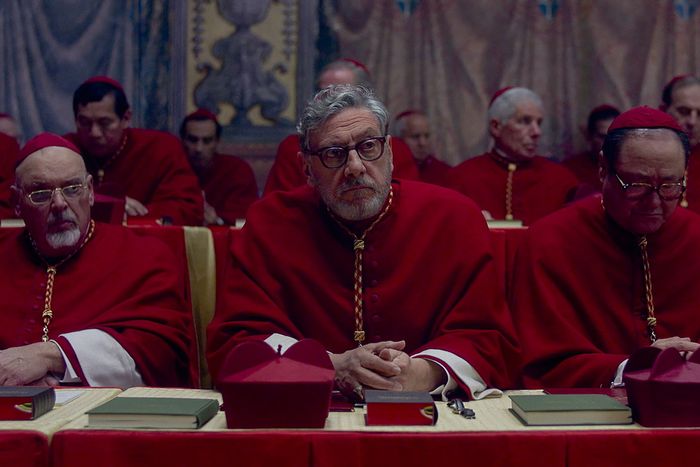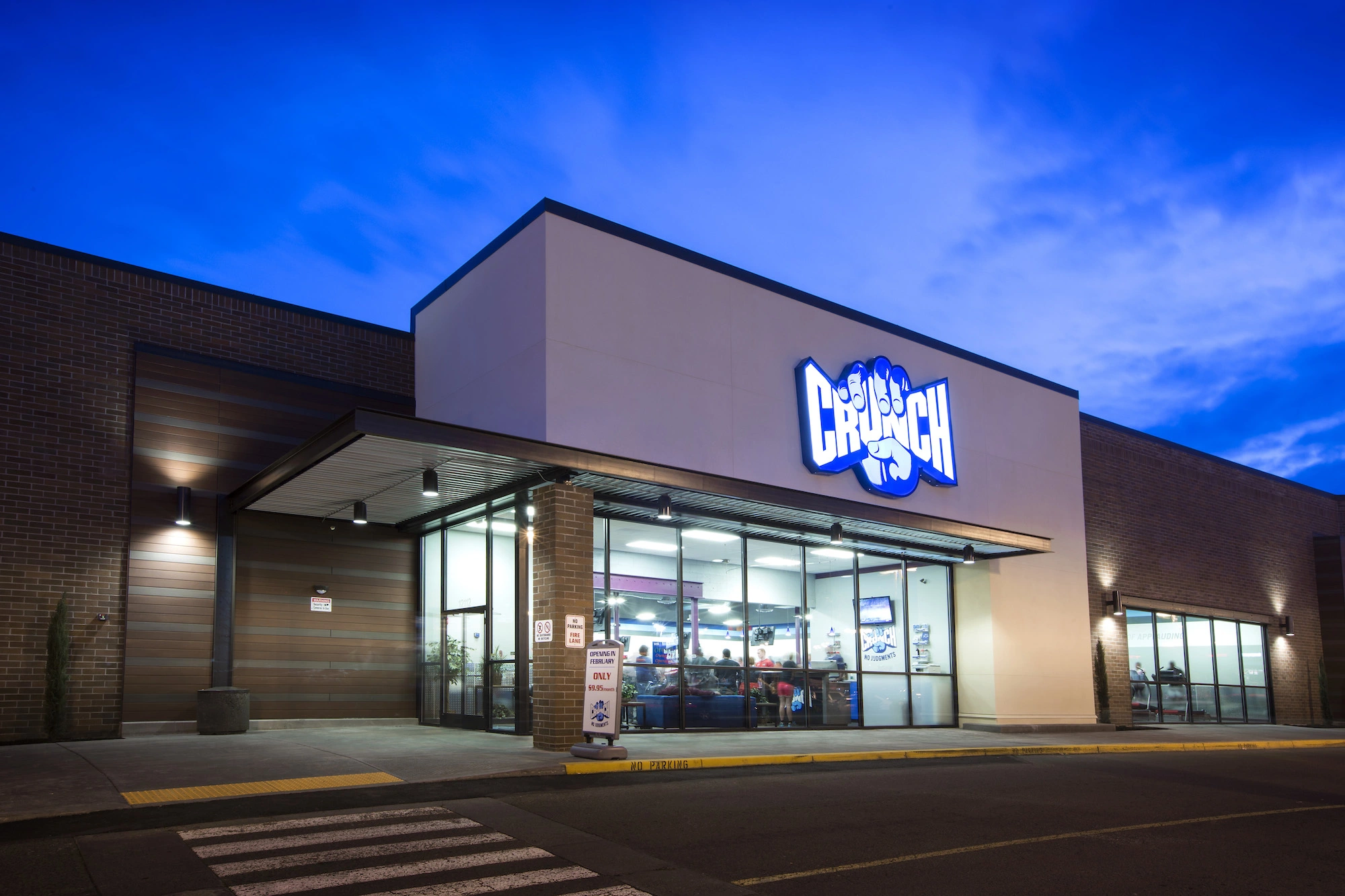Fashion
Why Conclave Was the Fashion Movie of the Year

Photo-Illustration: by The Cut; Photos: Everett Collection
If you, like me, have spent any time on the internet in the past two years, a term you may have heard being tossed amok is something called “quiet luxury,” which, if its shills are to be believed, can mean anything from a $1,500 off-the-rack Loro Piana sweater to a 100 percent polyester blazer from Zara. But I am here to tell you that I have witnessed luxury so quiet that it barely breathes, and it can be found in the costuming for the movie Conclave. The cardinals of this film are a catty bunch. They giggle, they chain-smoke cigarettes, they plot, they fat-shame past popes and they create scenes unbecoming of both their elderly age and their holy office. They also do all of the above while wearing exquisitely well-tailored cloaks and painfully trendy acetate spectacles straight out of a Miu Miu ad.
Being led into temptation by papal drip is hardly a new pastime on the internet, which has seen uproars ranging from a photo of Jude Law as the Young Pope, soaking up the sun in his sacramental robes and Ray-Bans to a frenzy over an image of a Balenciaga-puffer-clad Pope Francis, which sadly turned out to be an AI-generated hoax. But in all the reviews, dispatches and memes about Conclave, hardly anyone has mentioned that this Very Serious Movie about a Very Serious Event also happens to be a lush two-hour extravaganza about my two main passions in life: beautiful clothes and bitchy gossip.
Ralph Fiennes with his informant in their incredible capes.
Photo: Focus Features/ Courtesy Everett Collection
Forgive me O Holy Father, for completely bypassing the film’s larger philosophical questions about faith and doubt, for I was far too busy admiring the immaculate fits on the papabili as they took their seats in the Sistine Chapel, right after Ralph Fiennes’s Cardinal Lawrence declares extra omnes in his rumbly baritone. When John Lithgow’s Cardinal Tremblay indignantly denies the accusations of simony (corrupt activities), all I thought was, “Oh wow, who makes his wire-rimmed glasses? In fact, who makes all of their glasses? Do I need Cardinal Tedesco’s bitchy blue frames? I even made a note to see if there’s a special stationery shop that emblazoned the lovely heavy cream notecards with “Eligo in Summum Pontificem,” on which they write their pick for Pope in sleek black ballpoint pens. And finally, when Cardinal Lawrence sobs before his bathroom mirror, his face wracked with the pain of betrayals past and present, I squinted really hard because I wanted to know the make of the rather luxe-looking travel-size toiletries in the tiny baggy that he tears apart in frustration. I was indeed influenced, and I coveted his tiny Vatican-issued tube of toothpaste.
Not since Gwyneth Paltrow dropped the list of vendors for her 2018 wedding has my glamour-starved brain latched onto such unnecessary yet satisfying details with such ferocity. No multimillionaire celebrity’s Architectural Digest home tour, nor any “Get Ready With Me”s posted by modern-day Austro-Hungarian nobles on TikTok has entranced me into material covetousness, the way the sacerdotal chicness of the cardinals of Conclave did.
Cardinal Tremblay in his wire-rimmed glasses.
Photo: Focus Features/ Courtesy Everett Collection
If the cardinals’ swishing cassocks look as if they belong on a Balenciaga runway, that’s because the film’s costume designer Lisy Christl has been vocal about how she and the film’s director Edward Berger were both inspired by the label’s 2020 couture show featuring voluminous, billowing gowns. In an interview with the New York Times, Christl also confessed to finding contemporary papal clothing sold by Gammarelli, the Pope’s official tailors, a little insipid. Instead, she took the creative liberty to forgo the burnt oranges of the robes worn in real life and make their onscreen vestments in a deep crimson found in Renaissance paintings.
The result is costuming which is almost couture-like, with luscious reds that add to the mystique of the film’s ancient yet ominous world-building. In Conclave, the reformists within the Curia wear silver crosses, while the conservatives, led by Cardinal Tedesco, wear heavily filigreed crosses of gold. When the liberal-leaning Cardinal Lawrence ascends the stairs of the Sistine Chapel, whispering side by side with his informant, the two men’s mozettas (elbow-length cloaks) — one bright scarlet, the other a nearly purplish-claret — practically shimmer onscreen with their vivid velvet richness.
Cardinal Tedesco with the blue frames.
Photo: Focus Features/Courtesy Everett Collection
High fashion and the Holy See are similar worlds: insulated, inaccessible except to the rich and the ennobled, with codes and languages woven into clothing that signal status. Both alternate between cycles of opulence and austerity, using each to convey specific messages to the world about themselves and their beliefs. The 2000s belonged to Benedict XVI, a renowned clotheshorse named “Accessorizer of the Year” by Esquire magazine in 2007. His reign as pope led to many news cycles on whether his shades were Gucci or Serengeti Classics; on how he paired his ermine-lined velvet mozzettas with red leather loafers, and that those loafers had allegedly been made by Prada, a rumor that the Vatican hastily dispelled with an all-timer of a statement: “The pope is not dressed by Prada but by Christ.” Despite his total eschewal of ornate papal regalia, his successor, Pope Francis also became an accidental menswear influencer, earning the (arguably higher) title of “The Best Dressed Man of 2013” from Esquire Magazine. In the New York Times, Silvia Venturini Fendi called his return to sartorial humility “a whole new spirit in Rome.”
If the premise of what passes for “quiet luxury” today is an if-you-know-you-know language spoken only by those who learned via generations of wealth hoarding — then the Roman Catholic Church has been in that business since before the Middle Ages, when it was still selling indulgences to the faithful. Divine holiness at its highest echelons does not shy away from ordinary mortal indignities such profit, tax avoidance and capital gains, all of which are necessary to maintain godly grandeur, which does not come cheap. Conclave is essentially a film about a very wealthy business organization’s annual shareholder meeting, which just happens to occur within the Domus Sanctae Marthae, where a full-time staff of nuns and postulants working round the clock ensures that the cardinals can focus solely on their scheming. It is wealth at its most unadulterated, by when it has been absorbed into a language and has become a uniform. The cardinals of Conclave are simply the latest in a long line of the real quiet-luxury influencers: clergymen that have (literally) been doing God’s work since the eighth century.













